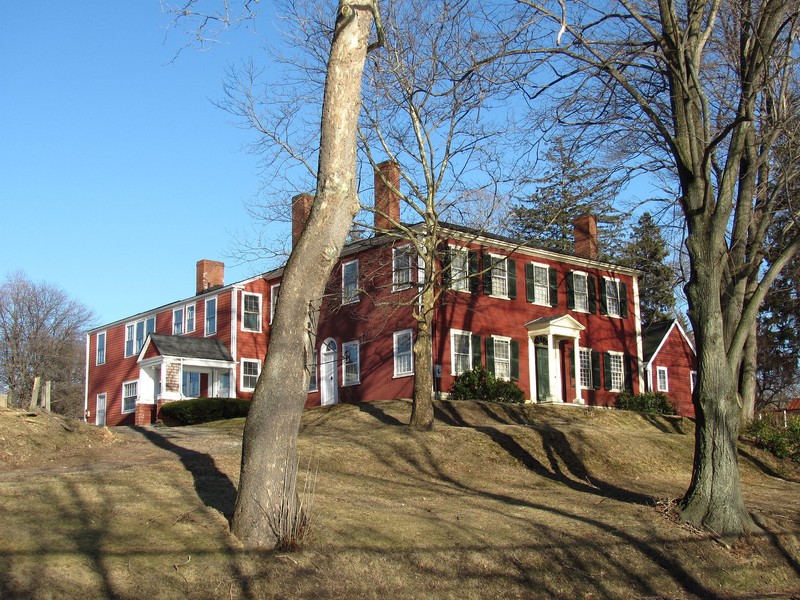This entry includes a walking tour! Take the tour.
Introduction
Text-to-speech Audio
Images
The Duncan House

Backstory and Context
Text-to-speech Audio
The Buttonwoods Museum showcases over 375 years of history and preserves a collection of property, artifacts, and landscape with historical significance to Greater Haverhill. Some of the collections on view include domestic objects, decorative arts, textiles, furnishings, military artifacts, shoes, archaeological artifacts of the Frederick A. Luce Collection, and the [Supreme Court Justice William H.] Moody Collection.The museum is anchored by three historic properties: the Duncan House, the John Ward House, and the Daniel Hunkins Shoe Shop.
The Duncan House is the only one of these three properties still at its original location and was the first property to come into the care of the Haverhill Historical Society. The Duncans had been a prosperous merchant family when they built this fine example of a rural Federal-style mansion in 1814. This new structure replaced the Saltonstall Seat, home of the Saltonstall family since 1663, which had been abandoned during the American Revolution due to the Loyalist sympathies of Richard Saltonstall. Mary Duncan Harris donated the house in 1903 and the museum opened the following year in 1904.
Named for Rev. John Ward, the first minister of Haverhill, the John Ward House was never actually occupied by him. However, it did stand on his property and was likely lived in by tenant farmers who worked his fields. The original structure was built around 1710, and a parlor was added about 1820, doubling the size of the home. Now furnished with reproduction tinware, cookware, redware, barrels, and textiles, the museum uses the John Ward House to teach early American life to school children, scouts, and other program visitors.
Shoemaker and farmer Daniel A. Hunkins built the shoe shop in 1859. This style shop is called a “10-Footer,” and shoe shops similar to this one dotted the countryside of Haverhill, Bradford, and the rest of Essex County in the early 19th-century. Eventually, factories would replace this cottage industry, and Haverhill would gain the nickname "Queen Slipper City."
The Buttonwoods Museum is a designated Essex National Heritage Area Visitor Center offering information to residents and tourists about the city and the region beyond.
Sources
https://en.wikipedia.org/wiki/Haverhill_Historical_Society_Historic_District
http://www.buttonwoods.org/about_us.html
